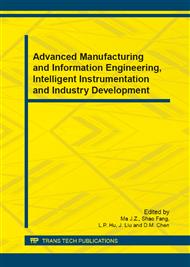p.3803
p.3808
p.3813
p.3817
p.3822
p.3826
p.3831
p.3835
p.3839
Designing Access Control Policy Using Formal Concept Analysis
Abstract:
The need to securely share information among collaborating entities is increasingly becoming important. It often needed to implement access control (AC) models. The objective of this paper is to design access control policy using formal concept analysis, which is based on mathematical lattice and order theory. We provide discussion on how FCA can be used to capture RBAC constraints. We show with FCA, we can express more intend constrains than it can be done in traditional RBAC approach. The experimental results show that the approach is more resilient to dynamic computer environment.
Info:
Periodical:
Pages:
3822-3825
Citation:
Online since:
August 2014
Authors:
Keywords:
Price:
Сopyright:
© 2014 Trans Tech Publications Ltd. All Rights Reserved
Share:
Citation:


